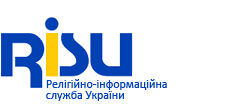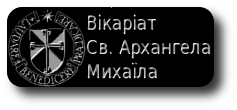
CL: A reality in the Church
Category:
- Communion and Liberation
Communion and Liberation is an ecclesial movement whose purpose is the education to Christian maturity of its adherents and collaboration in the mission of the Church in all the spheres of contemporary life.
It began in Italy in 1954 when Fr. Luigi Giussani established a Christian presence in Berchet high school in Milan with a group called Gioventù Studentesca (Student Youth), GS for short. The current name of the movement, Communion and Liberation (CL), appeared for the first time in 1969. It synthesizes the conviction that the Christian event, lived in communion, is the foundation of the authentic liberation of man. Communion and Liberation is today present in about seventy countries throughout the world.
There is no type of membership card, but only the free participation of persons. The basic instrument for the formation of adherents is weekly catechesis, called "School of Community."
CL defines itself as a movement because it does not, first of all, take the form of a new organization or structure (there are no membership cards) nor as a special insistence on some particular aspect or practice of the life of the faith, but as a call to live in the present the Christian experience as defined by tradition. The aim of life in CL is to propose the presence of Christ as the only true response to the deepest needs of human life in every moment of history. In the person who encounters and adheres to the presence of Christ there is generated a movement of conversion and witness, which tends to leave its mark on the environment in which he or she lives (family, work, school, neighborhood, society, etc.). Born in the schools as a proposal to young people, CL today extends its call to everyone, irrespective of age, occupation, or social position.
In recent years, the presence of CL in society has become more specifically attuned to its educational, cultural, and social nature. At a moment when, for various reasons, even politics and the confrontation of ideas seem to have lost their ability to involve people on a personal level, and in which, not only in Italy, some have presumed to disguise the struggle for power as a moral revolution, the movement is concentrating on the crisis at the root of all the social and political crises: the crisis in education.
Through the action of many committed adults in the schools (where the use of the old initials GS still continues) and as youth group leaders, CL today offers its contribution to keeping alive positive educational proposals in a society that seems at times definitively exhausted and emptied of all its urge to idealism. And, through the social and also political action of members and friends of the Movement, the same question continues to be raised that marked one of the earliest battles of GS from the 1950s: the right to freedom of education. "You can make us go around naked, but at least leave us the freedom to educate," was and is one of CL's slogans. This freedom, in fact, encompasses all the true freedoms that a non-oppressive society must guarantee and value: from free enterprise to freedom of association.
The Movement, through its publications and the free, responsible action of committed lay people in the mass media and in publishing and cultural concerns, has reaffirmed the centrality of the method of the Incarnation against every spiritualistic, gnostic, or Pelagian reduction, and, on the opposite side, against every dualistic separation between what regards the temporal and what belongs to faith.
From the point of view of the Movement, these most recent years have been marked by an increasing centrality of the catechism offered by the "School of Community" and by the growth of Fraternity groups, that is, groups of adults spontaneously coming together to commit their lives in a desire for holiness through a "rule" of personal ascesis, a lived communion, and charity.
CL's contribution to the Church and the world is thus distinguished by three words: education, fraternity, and works. These are the three factors on which currently and concretely CL spends its energy with the aim of contributing to the human glory of Christ in history.
The organizational structure of a movement like CL is elastic by nature. At its top is the General Council (commonly called the "Center") presided over by Fr Julián Carrón and uniting the directors in Italy and abroad for every sphere - school, university, work, culture, etc. - in which the Movement operates.
Each of these spheres is led by its own group of leaders. On the local level - national, regional, or city - the Movement is guided by "diakonias," that is, groups of leaders available for service (as their name indicates) to the life of the community.
The leaders are chosen from among those who show the clearest awareness of the Movement's aims and most generous witness and dedication of service to the community.
Outside of Italy there now exist communities which, due to the number of their participants and the maturity of their experience, have become important for the leadership of the Movement; this is the case of Spain, whose leaders now take part in the general direction of the Movement.
http://www.clonline.org/storiatext/eng/comlibe/clreal.htm














